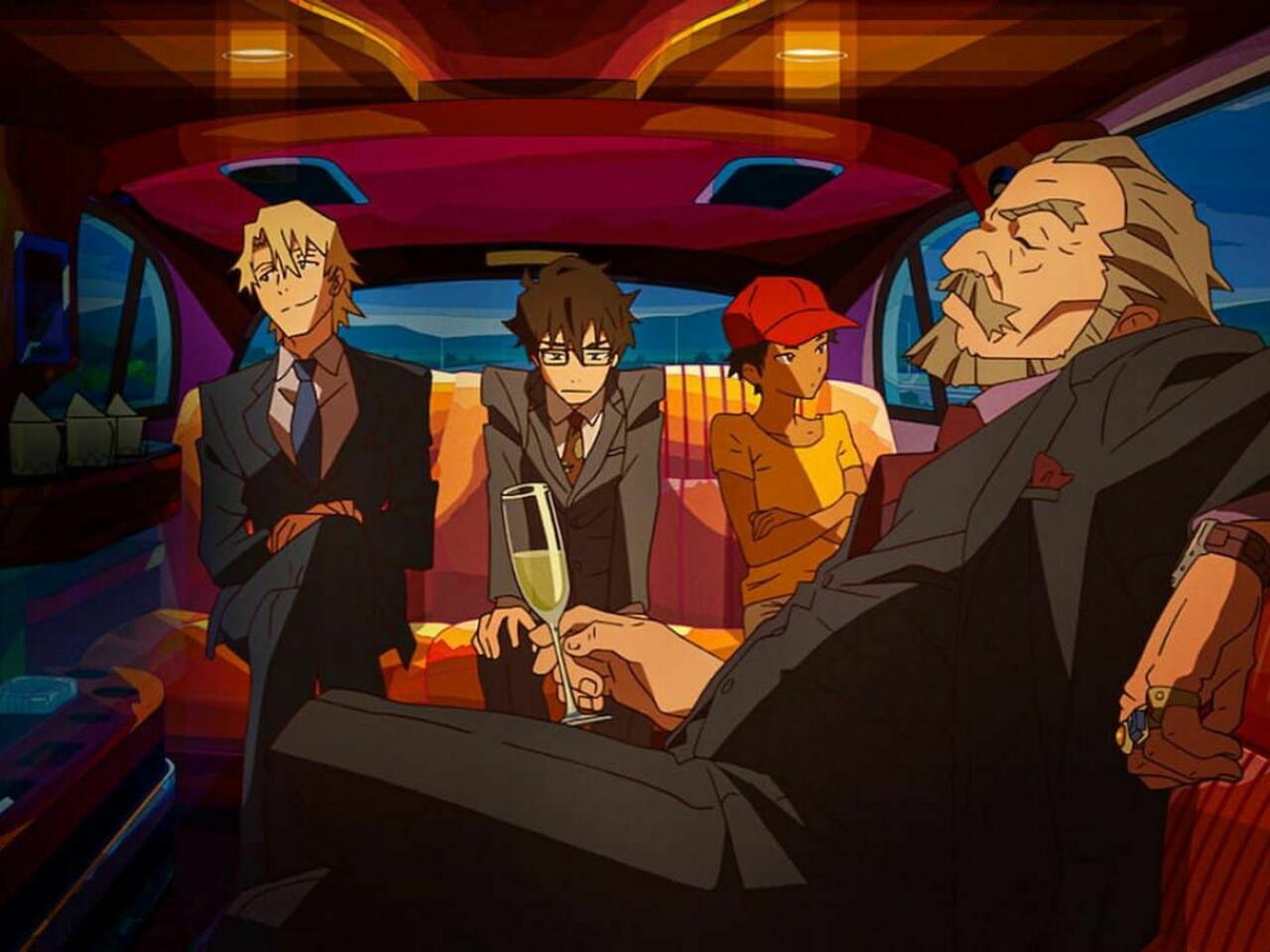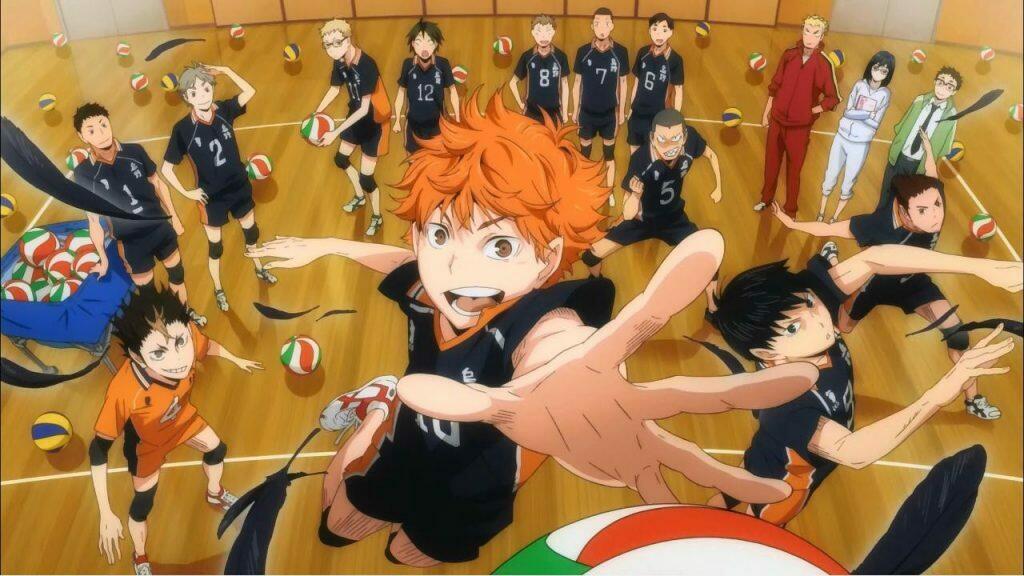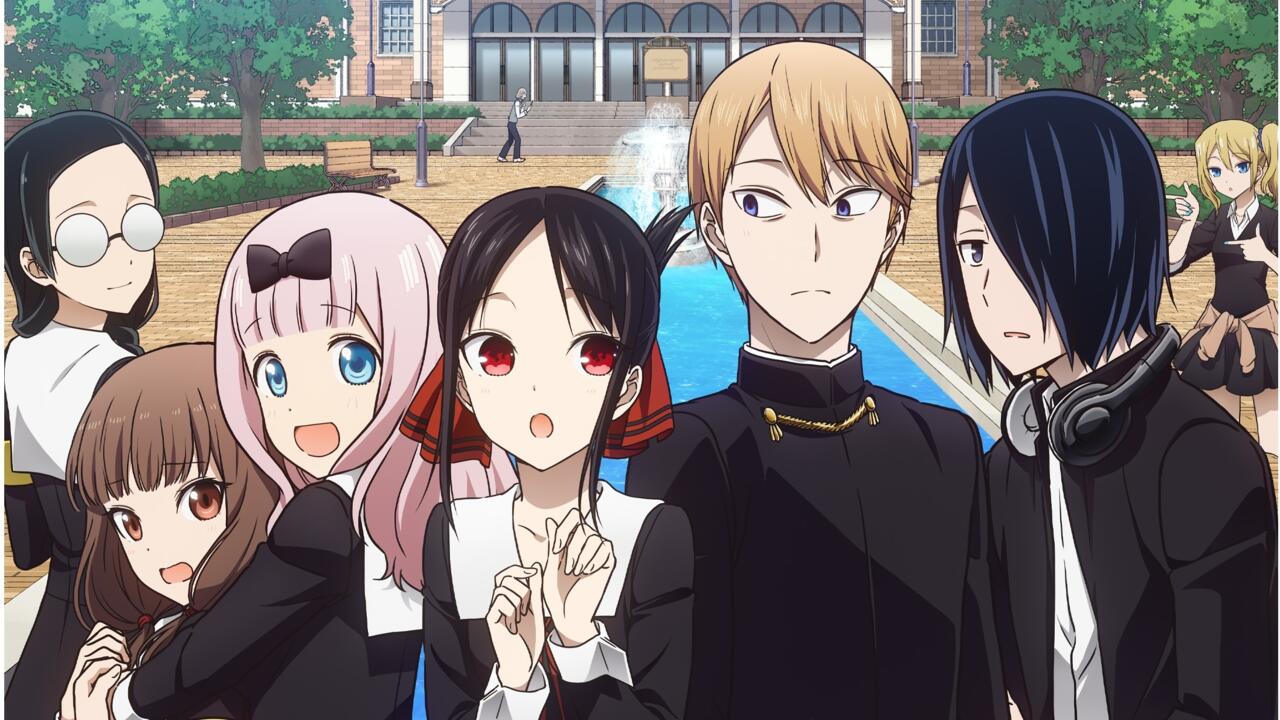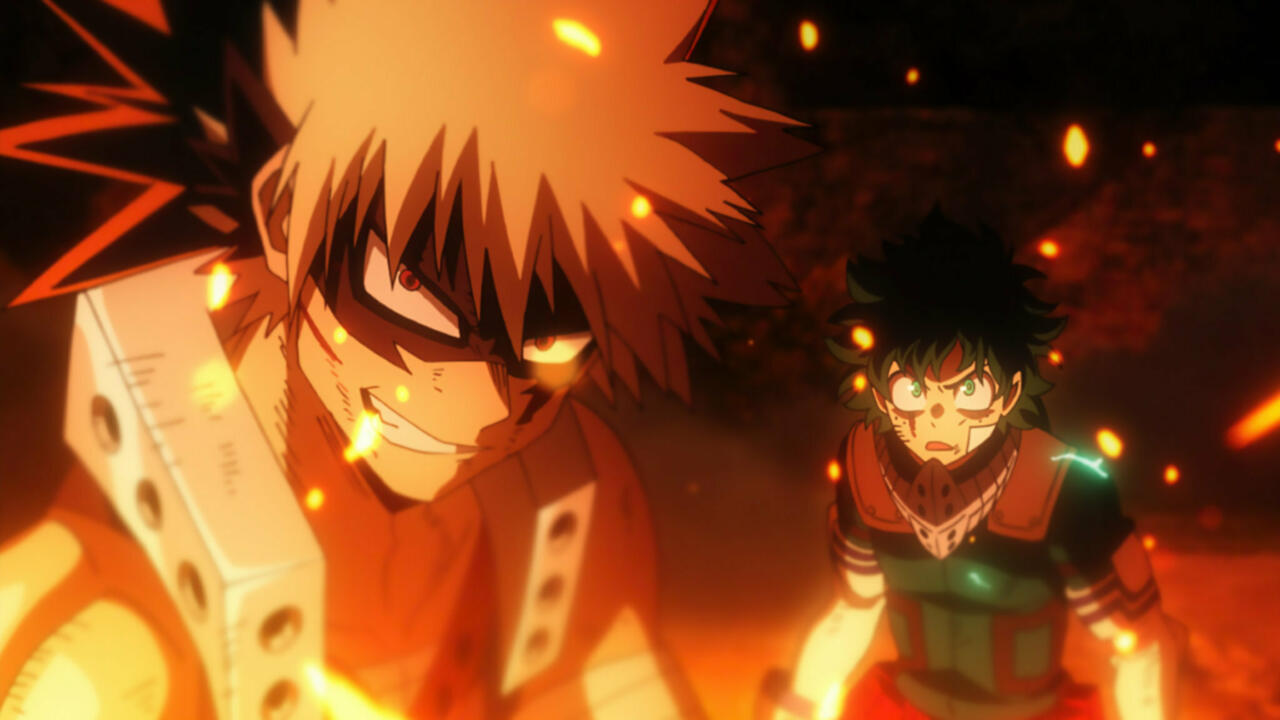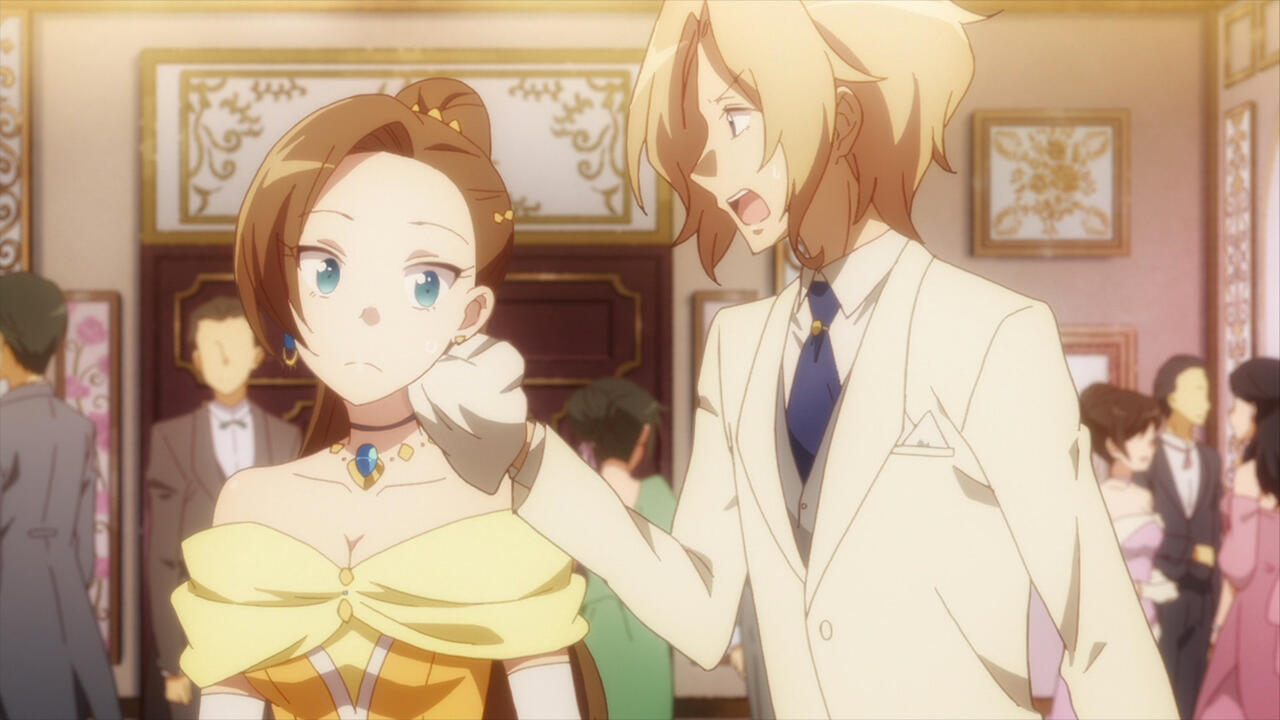Our 6 Favorite Anime Of 2020
GameSpot may receive revenue from affiliate and advertising partnerships for sharing this content and from purchases through links.
From volleyball boys to sentient video game villains, these are the anime we loved in 2020.
2020 was a bit of an oddball year for anime, with COVID-19 causing several shows and movies to be delayed while a few others were split into parts, with the first half releasing early in the year and the second half debuting months later. But we still managed to get quite a few gems.
In the following article, we detail the six anime that really stood out to us in 2020. We loved them for different reasons--some, like Great Pretender, left us on the edge of our seats with its fast pacing and dramatic cliffhangers while others, like My Next Life As A Villainess: All Routes Lead To Doom, provided a welcome amount of hilarity in an occasionally bleak year.
Next, check out some of our other best-of-2020 lists:
Great Pretender
Great Pretender is a colorful and wacky anime about a group of con artists working together to swindle the wealthy corrupt. The show features a loveable protagonist in Makoto Edamura, a Japanese swindler who’s just trying to find happiness in a normal life, and a great deal of Great Pretender is spent hoping he’ll manage to break free of the charismatic but manipulative Laurent Thierry while silently admitting that Edamura fits in well with Laurent’s crew of outlaws.
To the anime’s benefit, the whole season is split into small arcs, each of which only lasts for a few episodes and focuses on a different heist. So instead of one long drawn-out story, Great Pretender is several different stories, each of which focus on developing a new villain and providing additional insight into one of the members of the crew of antiheroes that the show follows.
This is all paid off in the show’s final arc, which reveals that there’s actually been a narrative throughline for the anime this entire time--looks like you, the viewer, were even being conned. It’s not as mind-boggling a reveal as that seen in the most esteemed of anime dramas, but it is a rather clever bit of meta storytelling to trick the viewer into further emphasizing with Edamura as we see that Laurent has been manipulating and conning us this whole time as well.
Haikyu: To The Top
Haikyu returned in 2020 for a fourth season, introducing a brand-new subhead and animation style with it. The fourth season played to both strengths of the shonen volleyball series, as it’s split into two distinct halves that are each satisfying in their own way.
The first half of To The Top felt like Haikyu Season 2, in that it slowed down and focused on the internal development of its characters--namely protagonists Hinata and Kagayama. The second half (which focused entirely on a single volleyball game like Season 3) payed off that development in a rewarding way, in that we got to see how Hinata, Kagayama, and the rest of their team had improved to the point that they could take on Inarizaki High School and the powerful duo of the Miya brothers.
Few sports anime are as popular as Haikyu and To The Top is a good reminder of why. The show doesn’t rely on superheroic levels of play to make it exciting, it establishes what each character is capable of and then delivers on a story where the stakes feel very real. And thanks to the new animation style, Haikyo: To The Top implements incredibly detailed facial expressions, which allows viewers to better understand a character’s train of thought or emotional state during the fleeting seconds of a rally.
Kaguya-sama: Love Is War Season 2
Misunderstandings are usually one of the most annoying tropes in romantic comedies; it seems like many shows and movies in this genre rely on them for the crux of their plot to manufacture drama. Kaguya-sama: Love Is War works so well because it instead relies on misunderstandings for the basis of its comedy. In this anime, student council president Miyuki Shirogane and vice-president Kaguya Shinomiya are both crushing hard on each other, but both believe that if they admitted their feelings, the other would tease them for it.
It’s such a straightforward premise, but Kaguya-sama: Love is War stretches this one misunderstanding out into a collection of some of the funniest comedy sketches in its first season, and manages to do so again in Season 2. The introduction of new characters initially seems counter-intuitive given the charisma of the existing cast, but the newcomers seamlessly worm into the established back-and-forth, creating new avenues of comedy.
The show’s strength--especially in Season 2--is definitely its willingness to slowly build up to a punchline. Though each skit is self-contained, there are occasional throughlines for a few of them, resulting in jokes that have been building all season long. You don’t really notice it until the punchline lands, but when it does it almost always hits.
Keep Your Hands Off Eizouken
Few anime explore the concept of creating anime, and even less manage to do so with the same level of charm and attention to detail as Keep Your Hands Off Eizouken. This comedy sees anime-lover Midori Asakusa, money-hungry Sayaka Kanamori, and socialite Tsubame Mizusaki joining forces to create a club at their high school for creating anime.
Though its plotlines are usually played for laughs, Keep Your Hands Off Eizouken excels for leaning into and exploring the creative process behind anime--both the fun aspects that attract creatives like group brainstorming, as well as the less glamorous parts of the business like work crunch and funding. Both Midori and Tsubame dream of becoming professionals in the anime sphere while Sayaka is the realist, typically reigning in the expectations of the other two.
Because at the end of the day, Keep Your Hands Off Eizouken is an anime about making anime, not an anime about making your dreams come true. Reality is often much harsher than what you’ve imagined. It’s not all doom and gloom of course--this probably wouldn’t have been one of our favorite anime of the year if that had been the case--but Keep Your Hands Off Eizouken is special because it’s willing to tackle and discuss the often glossed over hardships of working in the anime business while still delivering a wonderful narrative of why people still want to pursue such a career path anyway.
My Hero Academia: Heroes Rising
Before theaters shut down, a few anime movies managed to have their theatrical release. Among them was My Hero Academia: Heroes Rising. And what a movie! Though its ending falls a little flat by finding a way to conveniently erase what would have been an incredibly cool and fulfilling plot development, the movie up to that point contains some of the best action sequences that My Hero Academia has ever had. In Heroes Rising, Class 1-A is sent to an island to temporarily run its hero agency and get some experience in preparation for their futures as professional superheroes. Things are running smoothly until the island is attacked by a mysterious masked man and his followers, who cut off communications. This forces Class 1-A to protect the island and its citizens without the assistance of any adult heroes.
Heroes Rising succeeds where Two Heroes largely doesn't in that it leans into My Hero Academia's biggest selling point: it's an anime about a class of students, not just one person. Two Heroes largely focuses on main protagonist Izuku Midoriya, and incorporates scenes that focus on a select group of his fellow Class 1-A students. Heroes Rising, on the other hand, gives pretty much every member of Class 1-A a chance to shine. Midoriya and his rival Katsuki Bakugo are definitely the stars, but the others participate in some impressive stand-out battles as well.
More than anything, Heroes Rising drives at the underlying message of My Hero Academia that's been slowly explored in the show since Season 3: That All Might's ideal of one prominent hero standing as the symbol of peace is fundamentally flawed, and that it would be much better if a group of heroes stood side-by-side as symbols of peace. In Heroes Rising, you begin to see the start of such an idea bear fruit, as Class 1-A bands together to defeat a group of powerful supervillains. None of them could have succeeded on their own, but together they're a formidable force.
My Next Life As A Villainess: All Routes Lead To Doom
My Next Life As A Villainess: All Routes Lead To Doom is a very lengthy title for a short and sweet anime. The anime follows a young woman reborn as Katarina Claes, the villainess of a video game where the good ending results in Katarina’s exile and the bad ending leads her to be killed. Wanting to avoid both possibilities, Katarina works to befriend the game’s heroine and the other characters, scheming for an ending where she gets to live.
The result is an incredibly wholesome show about a girl who is so laughably dense that she doesn’t realize that she’s managed to make practically all her friends--both the men and women--fall madly in love with her. In Katarina’s own mind, she’s convinced that everyone still sees her as a villain who’s doomed to be exiled or killed one day, while those around her fruitlessly continue to pine for her affections. It’s all hilarious.
This is one of those anime where you can just sit down, start an episode, and know that no matter how bleak things might seem for Katarina, the truth is that she’s overthinking practically everything and nothing but good things are going to come her way. Admittedly, that does mean that the show has extremely low stakes, but in a year like 2020, getting an anime like My Next Life As A Villainess: All Routes Lead To Doom was a refreshingly funny watch.

